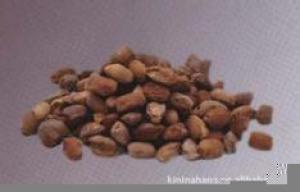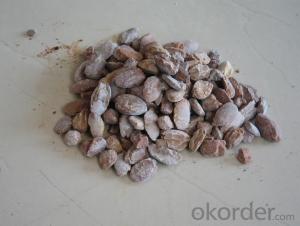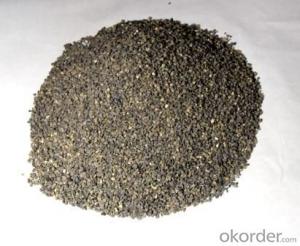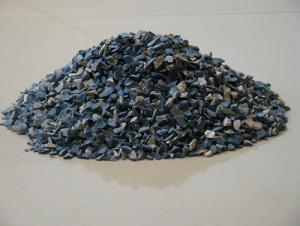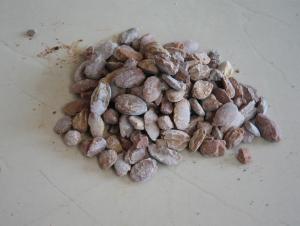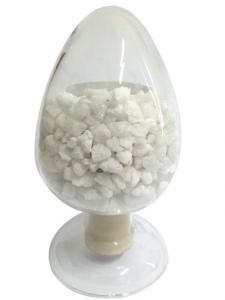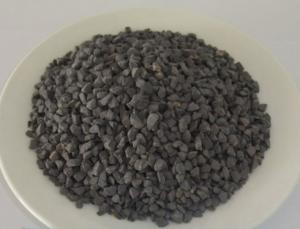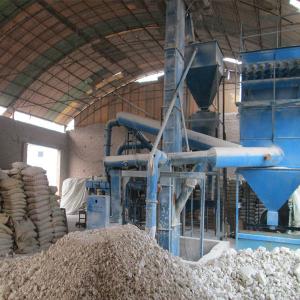Raw Materials for Refractory:Dead Burnt Magnesite MgO 94.5%
- Loading Port:
- Dalian
- Payment Terms:
- TT OR LC
- Min Order Qty:
- -
- Supply Capability:
- 2000 m.t./month
OKorder Service Pledge
OKorder Financial Service
You Might Also Like
| Item | MgO | SiO2 | CaO | LOI | B.D.(g/cm3) |
| DBM-97 | 97 | 0.7 | 1.4 | 0.2 | 3.2 |
| DBM-96 | 96 | 1.5 | 1.5 | 0.2 | 3.2 |
| DBM-95 | 95 | 2.2 | 1.6 | 0.3 | 3.2 |
| DBM-94 | 94 | 3 | 1.6 | 0.3 | 3.2 |
| DBM-93 | 93 | 3.5 | 1.6 | 0.3 | 3.2 |
| DBM-92 | 92 | 4 | 1.6 | 0.3 | 3.18 |
| DBM-92 | 92 | 4 | 1.6 | 0.3 | 3.18 |
| DBM-91 | 91 | 4.5 | 1.6 | 0.3 | 3.18 |
| DBM-90 | 90 | 4.8 | 2 | 0.3 | 3.18 |
| DBM-87 | 87 | 7 | 2.2 | 0.3 | 3.2 |
Dead burned magnesite- DBM-is produced using selected natural magnesite that is purified and is calcined in a shaft kiln.The final product is used for electric furnacefloors and furnace liner tamping.
Main products level :
0-1mm;1-3mm;3-5mm;0-10mm;0-30mm
50 to 325mesh (90% through)
Product feature:
high temperature performance and high-density, strong anti-permeability ability and easy to rapid sintering, very thin sintered layer,good thermal shock stability, strong slag-resistance, long service life and so on.
Product function:
Apply to the construction of bottom and wall of all kinds steel making electric arc furnace and ferroalloy smelting furnace for hot charging of hot metal and second hand steel
Product usage:
Mainly used in producing common magnesite brick, magnesite aluminum brick, magnesite chrome brick, gunning mix, hot patching mix for converter and EAF ect .
Product Advantage:
Our factory produce the products of the Dead-burned magnesite are selected natural magnesite, it is produced by mine-selecting, purifying, calcimine in shaft kiln. It is an ideal material for unshaped refractory material, the final products are used in open hearth furnace, electric furnace bottom and furnace's lining tamping.
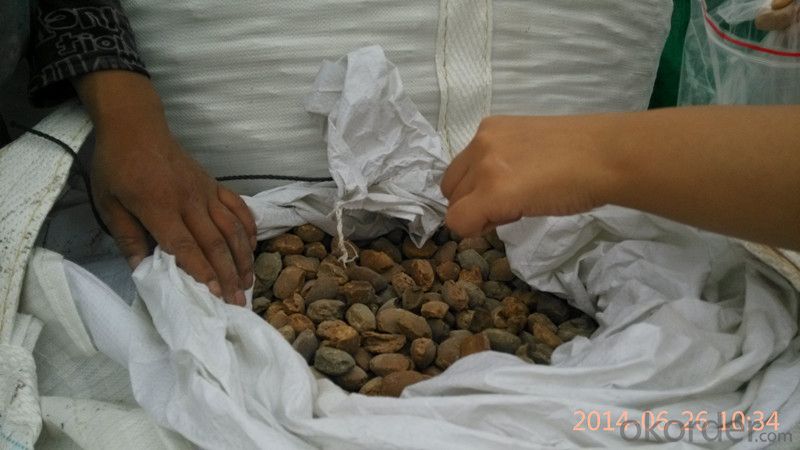
- Q: Which company needs the new refractories?
- The power plants are mainly used in steel plant, lime kiln, coking plants, boilers, etc. I will try my best to answer what I can. There are too many glassworks. You can tell me more anout what you need. As long as there is a large kiln business, the refractories and aluminum manufacturer are needed.
- Q: The primary problem, does the gas permeable brick is fired refractory bricks(refractory) ?
- Yes. After moulding by casting in the firing of 1450 ° degrees.
- Q: What is the material composition of the new fire-resistant coating?
- New fire-resistant coating generally consists of base material, dispersion media, flame retardants, fillers, additives (plasticizers, stabilizers, waterproofing agents, moisture, etc.). (1) Base material is the basis of the composition of the coating, and it is the main film-forming substance, playing a decisive role in coating performance . For fire-resistant coating, its base material must be capable of matching with the flame retardant to constitute an organic fireproofing system. The base material commonly employed at home and abroad includes inorganic and organic film-forming material. Inorganic film-forming materials include silicate. Si03, K2 Si03Na2 Si03), silica and phosphate [Al. (HPO.). ] ect. There are a wide range of organic film-forming substance, usually flame retardent organic synthetic resins, such as phenolic resins, halogenated alkyd resins, polyester, halogenated olefin resins (such as vinyl chloride resin), amino resin (melamine resin, urea resin, etc. ), tar-based resins, furan resins, heterocyclic resins (e.g., polyamide-imide, polyimide, etc.), organic elements resins (e.g. silicone resin), rubber (halogenated rubber such as chlorinated natural rubber) and so on. There are numerous latex taking water as solvent. www.hc3600.
- Q: How long is the duration of fire resistance that fireproof door of level B can endure?
- Level B refers to the fire resistance rating and different hours in fireproofing of the fireproof door. Fireproof door of level A can endure fire for 1.5 hours while level B 1.2 hours
- Q: What kind of refractories do the anode baking furnace use?
- Use refractory bricks.
- Q: What's the type of fire proofing thermal insulation materials?
- Hello! Fire proofing thermal insulation material can be classified as inorganic thermal insulation material and composite thermal insulation material. According to the form, it can be divided into fibrous veneer, mineral wool, rock wool, glass wool, aluminum silicate cotton, ceramic fiber, microporous diatomite, calcium silicate, expanded perlite, expanded vermiculite, aerated concrete, bubble foam glass, ash, glass, clay, foam concrete, and pasted paste powder polystyrene particles insulation pulp, etc. They are characterized by flame retardancy and fire proofing and thus can be used in buildings with high fire proofing class. Among them, calcium silicate, aluminum silicate and asbestos can also be used for the thermal insulation for heat supply pipelines.
- Q: Who knows the highest temperature the high-temperature refractory coating can resist?
- The temperature resistance degree of high temperature coating is different according to different coating types. The temperature resistance degree is vary from tens to thousands, magnesia brick: Greater than 2000 degrees dolomite brick: Greater than 2000 degrees casting corundum brick: Greater than 1990 degrees. The above data come from the network, for reference only.
- Q: Who know about the knowledge of acid refractory material? Please explain in detail.
- Refers to the silicon dioxide
- Q: Who knows what fire heat preservation material are there?
- 1 thermal insulation materials with class A combustion performance Rock wool, glass wool, foam glass, ceramic foam, foamed cement, perlite and other 2. thermal insulation materials with B1 combustion performance Specially processed extruded polystyrene board (XPS) / specially processed polyurethane (PU), phenol, powder polystyrene particles. Heat-insulating material with B2 termal insulation performance Fire resistance can be thoroughly sloved by combining molded expanded polystyrene (EPS), extruded polystyrene (XPS) and polyurethane (PU), polyethylene (PE) Hairong module with glass beads (and cooperating with vitrified micro bead inventor Liu Weihua), hope my answer will help!
Send your message to us
Raw Materials for Refractory:Dead Burnt Magnesite MgO 94.5%
- Loading Port:
- Dalian
- Payment Terms:
- TT OR LC
- Min Order Qty:
- -
- Supply Capability:
- 2000 m.t./month
OKorder Service Pledge
OKorder Financial Service
Similar products
Hot products
Hot Searches
Related keywords
